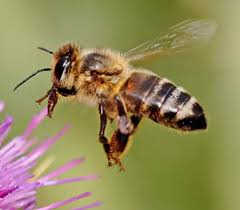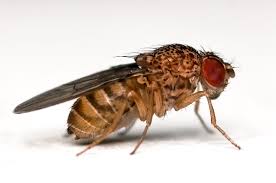For most of us who have ever had a pet companion, it’s a no-brainer that mammals and birds are emotional creatures. But what about insects?

A recent survey suggests that, for most of us who have ever had a pet companion, it’s a no-brainer that mammals and birds are emotional creatures, sharing emotions with multiple species and not just their own. Yet despite the thousands of YouTube videos and hundreds of recent scientific studies presenting easily accessible evidence and examples, not everyone thinks so.
It was only in 2012 that scientists finally agreed that nonhuman animals are conscious beings. Meanwhile, in the laboratory, we have only just discovered that dogs display immensely complex, human-like emotions like jealousy, and we are only just deciphering how cows express positive emotions through the whites of their eyes. But what about insects?
Briefly, let’s touch on the definition of what an emotion is, which is still largely debated, even today. While most of us are pretty convinced that emotions exist (seeing as we experience them ourselves), defining emotions is easier said than done.
A universal definition for emotions that is equally applicable across all academic fields, from neuroscience to psychology to philosophy, has been near impossible to achieve. In fact, the well-known neuroscientist, professor Joseph LeDoux, went so far as to suggest that we erase the word “emotion” from our scientific vocabulary entirely.
Although there are literally hundreds of different definitions for emotion, the most universal definition we could find originates from an article in Science called “Emotion, cognition and behavior”: “…emotions include (but are not limited to) certain expressive behaviors that are associated with internal brain states that we, as humans, subjectively experience as ‘feelings’.”
Pretty vague! And due to the subjective nature of it all, it confounds making comparisons between species as we can’t simply ask other species what they feel—and as such, we may wrongfully interpret or not even notice key emotional behaviors.
Another way of looking at this issue is that emotions are essentially ways for an organism to interpret the neural map of their body and surrounding environment in the part of their brain that monitors homeostasis. As Wikipedia puts it: “Homeostasis is the property of a system in which variables are regulated so that internal conditions remain stable and relatively constant.”
Basically, an organism experiences too much or too little of something either within them or around them in the environment (i.e. something deviates from neutrality or optimum balance), which is then detected by our brains (i.e. via neural maps of the body). We then experience our brain’s recognition of these changes or differences through two main avenues: As subjective feelings that motivate and influence our perceptions, actions, and behaviors, and as emotional behavior to express and communicate our state to others. This goes for primordial emotions like sexual desire, as well as more complex social emotions like embarrassment.
An experiment with honeybees

A fantastic example of an insect emotion experiment was carried out on our all-important flower loving friends, honeybees.
As just discussed, emotions influence our perceptions and behavior. So imagine that your house has just been ransacked by burglars and you are feeling shocked, upset, and really, really, REALLY angry. You’re so mad, in fact, that despite your friends trying to do and say everything possible to cheer you up, you feel so pessimistic that you simply see the downside in everything. In fact, you’re so upset that even your favorite food seems totally unappetizing.
Well, this is exactly what happened with the bees. The poor guys were shoved into a vortex (a machine used to vigorously mix chemicals) for one minute to simulate a badger attack on their hive and presumably cause them to feel complete and utter bee rage.
The bees were then presented with different solutions containing different proportions of two smelly chemicals: octanone, which the bees had been trained to associate with a yummy sugary treat, and hexanol, which they had been trained to associate with a bitter nasty taste.
Bees that had been shaken became pessimistic, glass-half-empty characters that were more likely to react to the nasty smell in the mixtures and recoil rather than being attracted to the yummy smell—a result of presumably being pretty irritated. Unshaken bees, on the other hand, remained their more optimistic, glass-half-full selves—and were more likely to see the mixtures as half-appetizing, as opposed to half-disgusting. Moreover, there were emotionally relevant changes in neurotransmitter levels in the shaken bees, changing levels of serotonin and dopamine, for example.
Scientifically, the act of shaking the bees can be interpreted as having created an internal neurological state that affected their subsequent behavior—all associated with changes in brain chemistry. This implies that agitated honeybees exhibit pessimistic cognitive biases.
Yet the authors were reluctant to say that this anger-like state was a definitive emotion. It is interesting to note that if dogs did the same thing and turned down their food after their owner had just died, for example, many wouldn’t doubt that the behavior was emotional.
An experiment with drosophila flies

A similar experiment was conducted with hungry fruit flies. This time, the experimenters tried to induce primal fear by casting a shadow over them to mimic the presence of an overhead predator, much like the fear humans might experience upon hearing an unexpected gunshot—a person will likely display behavioral and emotional changes until they feel safe and calm down—and this is exactly what seemed to happen with the fruit flies.
When the fake predator was introduced and then removed, potentially anxiety-ridden and hungry flies ignored their food until many minutes later. This suggests that an emotion-like state affected their behavior even after the stimulus was gone. Other key building blocks of emotions like scalability were also demonstrated, i.e. repeating the predator’s shadow simulation multiple times making the flies even more freaked out, taking them longer to calm down and dig into their food.
However, the authors of the study made it clear that although the flies’ responses were more complex than a simple avoidance reflex, they would not classify it as a bona fide emotion. What they did say was in the title of the study itself: “Behavioral responses to a repetitive visual threat stimulus express a persistent state of defensive arousal in Drosophila.”
Do insects have empathy?
As mentioned earlier, a second aspect of emotions is their expression—allowing others to be aware of, and respond to, an individual’s state. As such, an individual must possess the ability to empathize and respond in kind in order to detect and understand the signals of others.
In a recent experiment, woodlice showed the capacity for empathy-like behavior. Researchers demonstrated that calm woodlice reduced their more excited neighbors, causing them to also become calm.
One can argue that this is simply the mimicking of behaviors, as opposed to a process of emotional recognition and matching. Again however, remember that if one dog barks in what we interpret as an upset nervous manner, and causes the other dog to do the same, we would tend to automatically assume that the first dog passed on its emotion to the second one if they adopt the same postures and emotional behavior. Moreover, a study published in Mar. 2015 quite clearly stated that emotional contagion was observed in pigs as a form of empathy.
Do insects experience emotions?
To be strictly honest, we still can’t say to what degree insects experience emotions yet, although these early experiments are certainly setting the foundations for a future where we recognize that all animals have emotions of some sort.
Hopefully, by mapping the neural circuitry that underlies the fear-like behavior in flies, anger-like behavior in bees, or empathy-like behavior in woodlice, we may be one step closer to comparing insects’ experiences of feelings with our own. With insect brains surprising even entomology experts in their extraordinary similarities with our own brains—despite marked differences—we may come to realize that the similarities are more profound than we would like to think.
Thankfully, we are beginning to stop with our centuries long obsession with human species superiority. This belief made it permissible to ravage and raid the earth, and downplay emotions felt by other animals. Humans feel love—other animals merely bond. Humans feel jealous—but other animals merely guard resources.
While we cannot experience what it feels like for a bee to have a bee in its bonnet, a fly to feel like a bundle of nerves, or for a woodlouse to chill out with its buddies, neither can we experience other humans’ emotions. It is only because we can communicate (to a degree) that we know other humans have emotions too. Bear in mind that emotions are so subjective that we aren’t especially accurate at understanding other humans’ emotions at the best of times—no less the emotions of another species!
As we continually delve deeper into the genetic and neurological basis of emotions, the evolutionary origins of emotions will undoubtedly be gradually unearthed. Perhaps this will take us one step closer to letting go of our overinflated humanist ego and realize that ALL animals experience emotions of some kind.
“Even insects express anger, terror, jealousy and love, by their stridulation.”
– Charles Darwin (1872)
